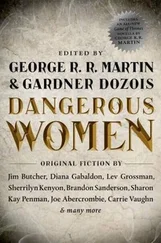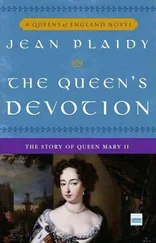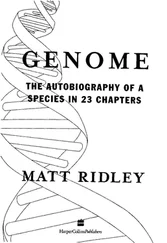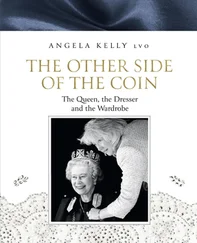The Queen - Matt Ridley
Здесь есть возможность читать онлайн «The Queen - Matt Ridley» весь текст электронной книги совершенно бесплатно (целиком полную версию без сокращений). В некоторых случаях можно слушать аудио, скачать через торрент в формате fb2 и присутствует краткое содержание. Жанр: Старинная литература, на английском языке. Описание произведения, (предисловие) а так же отзывы посетителей доступны на портале библиотеки ЛибКат.
- Название:Matt Ridley
- Автор:
- Жанр:
- Год:неизвестен
- ISBN:нет данных
- Рейтинг книги:4 / 5. Голосов: 1
-
Избранное:Добавить в избранное
- Отзывы:
-
Ваша оценка:
- 80
- 1
- 2
- 3
- 4
- 5
Matt Ridley: краткое содержание, описание и аннотация
Предлагаем к чтению аннотацию, описание, краткое содержание или предисловие (зависит от того, что написал сам автор книги «Matt Ridley»). Если вы не нашли необходимую информацию о книге — напишите в комментариях, мы постараемся отыскать её.
Matt Ridley — читать онлайн бесплатно полную книгу (весь текст) целиком
Ниже представлен текст книги, разбитый по страницам. Система сохранения места последней прочитанной страницы, позволяет с удобством читать онлайн бесплатно книгу «Matt Ridley», без необходимости каждый раз заново искать на чём Вы остановились. Поставьте закладку, и сможете в любой момент перейти на страницу, на которой закончили чтение.
Интервал:
Закладка:
David Haig and Alan Grafen believe that such a response is indeed common and that it consists of a sort of genetic scrambling, the swapping of chunks of chromosomes. If a chunk of chromo-GENETIC MUTINY AND GENDER
::: 99 :::
some lying next to Abel suddenly swapped places with the chunk lying next to Cain, then the mask of Cain would be unceremoni-ously removed from Cain 's chromosome and plonked onto Abel 's.
The result: Cain would commit suicide, and Abel would live happily ever after:"
This swapping is called "crossing over: " It happens between virtually all pairs of chromosomes in most species of animal and plant. It achieves nothing except a more thorough mixing of the genes—which is what most people thought its purpose was before Haig and Grafen suggested otherwise. But Haig and Grafen are implying that crossing over need not serve any such function; it is merely a piece of intracellular law enforcement. In a perfect world policemen would not exist because people would never commit murder. Policemen were not invented because they adorn society but because they prevent the disruption of society. So, according to the Haig-Grafen theory, crossing over polices the division of chromosomes to keep it fair.
This is not, by its nature, the sort of theory that lends itself to easy confirmation. As Haig remarks, in a dry Australian manner, crossing over is like an elephant repellent. You know it 's working because you don ' t see any elephants."
Cain genes survive in mice and flies by hugging their masks close to them so that they are not likely to be parted by crossing over. But there is one pair of chromosomes that is especially plagued by Cain genes, the " sex chromosomes," because these peculiar chromosomes do not engage in crossing over. In people and many other animals, gender is determined by genetic lottery. If you receive a pair of X chromosomes from your parents, you become a female; if you receive an X and a Y, you become a male (unless you are a bird, spider, or butterfly, in which case it is the other way around): Because Y chromosomes contain the genes for determining maleness, they are not compatible with Xs and do not cross over with them. Consequently, a Cain gene on an X chromosome can safely kill the Y chromosome and not risk suicide. It biases the sex ratio of the next generation in favor of females, but that is a cost borne by the whole population equally, whereas the benefit
::: 100 :::
The Red Queen
of monopolizing the offspring is received by the Cain gene itself—just as in the case of free-riders causing the tragedy of the commons."
I N PRAISE OF UNILATERAL DISARMAMENT
By and large, however, the common interest of the genes prevails over the ambitions of the outlaws. As Egbert Leigh has put it, "a parliament of genes" asserts its will. Yet the reader may be getting restless: "This little tour of the cellular bureaucracy, " he says, "fun though it was, has brought us no closer to the question asked at the beginning of the chapter—why there are two genders. "''°
Have patience: The road we have chosen—to seek conflicts between sets of genes—leads to the answer. For gender itself may prove to be a piece of cellular bureaucracy: A male is defined as the gender that produces sperm or pollen: small, mobile, multitudi-nous gametes. A female produces few, large, immobile gametes called eggs. But size is not the only difference between male and female gametes. A much more significant difference is that there are a few genes that come only from the mother: In 1981 two scientists at Harvard whose perspicacity we will reencounter throughout the book, Leda Cosmides and John Tooby, pieced together the history of an even more ambitious genetic rebellion against this parliament of genes, one that forced the evolution of animals and plants into strange new directions and resulted in the invention of two genders.''
So far I have treated all genes as similar in their pattern of inheritance. But this is not quite accurate. When a sperm fertilizes an egg, it donates just one thing to that egg: a bagful of genes called a nucleus. The rest of it stays outside the egg. A few of the father 's genes are left behind because they are not in the nucleus at all; they are in little structures called "organelles. " There are two main kinds of organelles, mitochondria, which use oxygen to extract energy from food, and chloroplasts (in plants), which use sunlight to make food from air and water. These organelles are GENETIC MUTINY AND GENDER
::: 1 01 :::
almost certainly the descendants of bacteria that lived inside cells and were "domesticated " because their biochemical skills were of use to the host cells. Being descendants of free-living bacteria, they came with their own genes, and they still have many of these genes: Human mitochondria, for example, have thirty-seven genes of their own: To ask, "Why are there two genders? " is to ask,"Why are organelle genes inherited through the maternal line? " ' Why not just let the sperm 's organelles into the egg, too? Evolution seems to have gone to extraordinary lengths to keep the father 's organelles out: In plants a narrow constriction prevents the father 's organelles from passing into the pollen tube: In animals the sperm is given a sort of strip search as it enters the egg to remove all the organelles: Why should this be?
The answer lies in the exception to this rule: an alga called
Chlamydomonas that has two genders called plus and minus rather than male and female: In this species the two parents ' chloroplasts engage in a war of attrition that destroys 95 percent of them: The 5 percent remaining are those of the plus parent, which by force of sheer numbers overwhelm the minus ones.' This war impoverishes the whole cell. The nuclear genes take the same dim view of it as the prince takes in Romeo and Juliet of the war between two of his subjects:
Rebellious subjects, enemies to peace,
Profanersof this neighbour-stainedsteel, —
Will they not hear? What, ho! you men, you beasts, That quench thefire of yourpernicious rage With purple fountains issuing from your veins, On pain of torture, from those bloody hands
Throw your mistemper'd weapons to the ground,
And hear the sentence of your moved prince:
Three civil brawls, bred of an airy word, By thee,Old Capulet, and Montague, Have thrice disturb'dthe quietof ourstreets:
::: If ever you disturb ourstreets again, Your lives shall pay the forfeit of the peace:
::: IO2:::
The Red Queen
As the prince soon discovers, even this severe sentence is insufficient to suppress the quarrel. Had he followed the example of the nuclear genes, he would have killed all the Montagues. The nuclear genes of both father and mother between them arrange that the organelles of the male are slaughtered. It is an advantage (to the male nucleus, not to the male organelles) to be of the type that allows its organelles to be killed, so that a viable offspring results.
So owners of docile, suicidal organelles (in the minus gender) would proliferate. Soon any deviation from a ratio of fifty-fifty killers and victims would benefit the rarer type and cause the ratio to correct itself. Two genders have been invented: killer, which provides the organelles, and victim, which does not.
Laurence Hurst of Oxford uses these arguments to predict that two genders are a consequence of sex by fusion. That is, where sex consists of the fusing of two cells, as in Chlamydomonas and most animals and plants, you find two genders. Where it consists of "conjugation "—the formation of a pipe between the two cells and the transfer of a nucleus of genes down the pipe—and there is no fusion of cells, then there is no conflict and no need for killer and victim genders. Sure enough, in those species with sex by conjugation, such as ciliated protozoa and mushrooms, there are many different genders: In those species with sex by fusion, there are almost invariably two genders. In one especially satisfying case there is a "hypotrich" ciliate that can have sex in either fashion.
Читать дальшеИнтервал:
Закладка:
Похожие книги на «Matt Ridley»
Представляем Вашему вниманию похожие книги на «Matt Ridley» списком для выбора. Мы отобрали схожую по названию и смыслу литературу в надежде предоставить читателям больше вариантов отыскать новые, интересные, ещё непрочитанные произведения.
Обсуждение, отзывы о книге «Matt Ridley» и просто собственные мнения читателей. Оставьте ваши комментарии, напишите, что Вы думаете о произведении, его смысле или главных героях. Укажите что конкретно понравилось, а что нет, и почему Вы так считаете.












